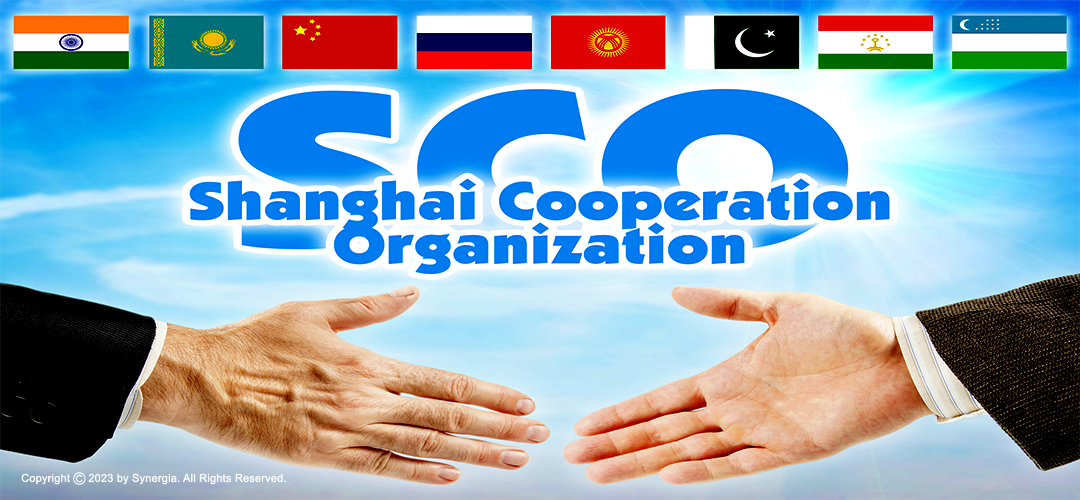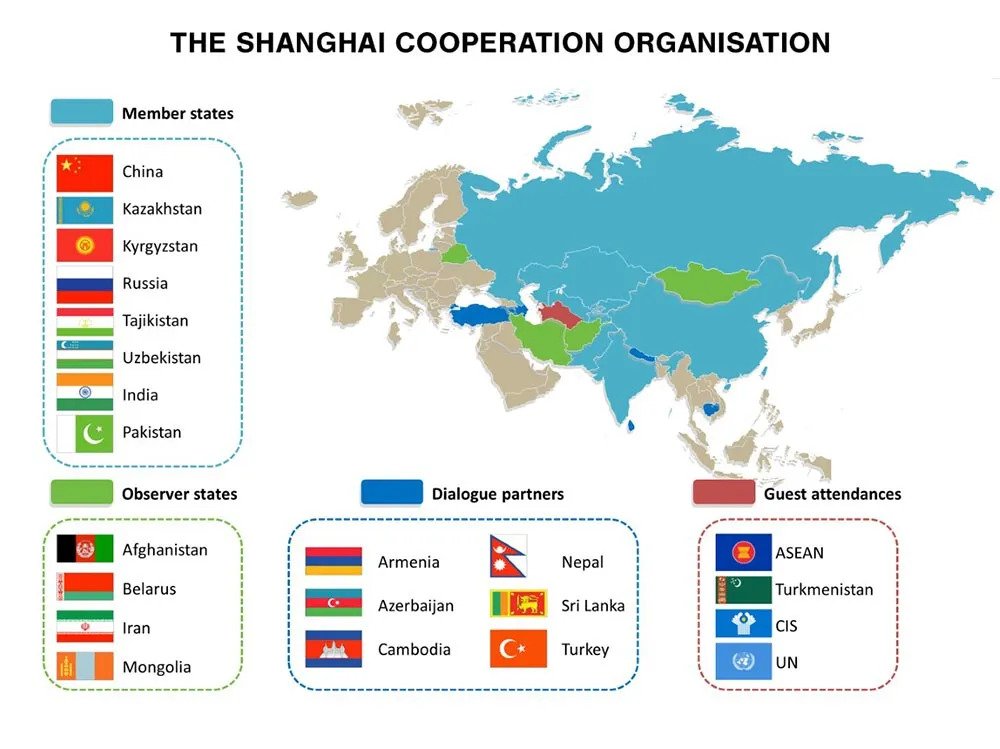Thaw at the Sco?
May 5, 2023 | Expert Insights

This is a busy year for India- apart from its presidency of the G20 group, India is also the Chair of the Shanghai Cooperation Organisation (SCO), an intergovernmental organisation established in 2001. The SCO includes Kazakhstan, China, Kyrgyzstan, Pakistan, Russia, Tajikistan, Uzbekistan, and India.
SCO pursues its policy based on the principles of sovereignty and territorial integrity of nations, non-interference in internal affairs, equality of all member States and mutual understanding and respect for the opinions of each of them.
The theme of India's Chairmanship of SCO in 2023 is 'SECURE-SCO'. India attaches particular importance to SCO in promoting multilateral, political, security, economic and people-to-people interactions in the region. The ongoing engagement with SCO has helped India promote its relations with the countries in the region with which India has shared civilisational linkages and is considered India's extended neighbourhood.
On April 28th, Raksha Mantri Shri Rajnath Singh presided over the SCO Defence Ministers’ Meet. Since the Chinese Defence Minister was attending the meeting, there were speculations that bilateral talks would be held on the sidelines between the defence minister of China and India, hopefully, to lower the tensions still simmering dangerously along the high Northern frontiers.
Background
A brief recapitulation of the long history of Sino-Indian tensions would be appropriate to understand the love-hate relations these two Asian giants maintain.
As a legacy of the British Raj, while certain conditionalities were imposed on Tibet by the British on the point of the bayonet, the Chinese were not officially party to the demarcation of the border between Tibet and British India. They did not sign the border demarcation agreement. Beijing was not happy with the agreement cut and could do little about it other than lodge feeble official demarches. Although never formally colonised, China had to cede to powerful Western forces who had deeply penetrated the country for its commercial exploitation and maintained an international conclave on Chinese territory through the force of arms. This would be the bone of contention between the Chinese and the British and later between Communist China and India.
In 1947 India became a free country, and in 1949 the Communists took power in China following their victory in a civil war. India was one of the most enthusiastic supporters of Communist China in this early Cold War period. While Western nations shunned the newly formed People’s Republic of China, India was foremost among the Third World countries in giving it quick diplomatic recognition. In return, India had the naïve hope that Beijing and New Delhi could build a shared future for Asia together. The Chinese, too, played along with this game. They lulled the Indian side into a false sense of complacency. And then, they launched a full-scale attack on the Indo-Chinese border in 1962, which led to an all-out war.
The border issue again came to the forefront as the Cold War was winding down during the late 1980s. Talks between India and China led to a number of border agreements during the 1990s. These did not resolve the problem. But a template was set for an eventual, hopeful resolution. It was decided that neither side would take any unilateral action at the border without consulting the other party. The emphasis was placed on the maintenance of the status quo. Economic liberalisation with China was picking up pace, and trade with India would boom. Also, the Chinese appeared to put monetary interests above military ones for the time being till 2020 when Galwan happened, and both countries came to the brink of an all-out conflict.
The bright side is that, despite the eyeball-to-eyeball confrontation on the Himalayan heights, both sides have kept communications level at the military and diplomatic levels. This has led to several measures which prevented further escalation of the tension. However, no significant reduction in the deployed forces has occurred for over 2 years. As per media reports, China has deployed over 60,000 soldiers on the border where the dispute is taking place. While Indian government figures are not readily available, it can be safely assumed that redeploying its formations from the Western sector can easily match the Chinese man-to-man.
While trade continues to bloom between the two, on the borders, tensions persist. With two modern militaries virtually deployed in an eyeball-to-eyeball posture, with heavy weapons, artillery, missiles and even tanks to back them up and powerful air forces, this is a dangerous Mexican Standoff. The sooner it is diffused and troops return to their peace locations, the better for peace and stability in the region.

Analysis
As can be clearly seen, the border dispute between India and China has a highly complex history, and the SCO Defence Minister's meeting was not expected to bring forth any significant change in the status quo.
Also, this being a multilateral forum, bilateral issues are not discussed.
Recently, in the American Intelligence Threat Assessment for 2023, it has been stated that the expanded military postures by both India and China along the Line of Actual Control (LAC) elevate the risk of armed confrontation between two nuclear powers that might involve direct threats to the U.S. and calls for its intervention. The Threat Assessment goes on to say that while India and China have engaged in bilateral border talks and resolved border points, their relations will remain strained in the wake of the countries’ lethal clash in 2020 — the most serious in decades. More worryingly, the “persistent low-level friction on the LAC has the potential to escalate swiftly.” This report had evoked a great deal of interest in India because, for the first time, the U.S. had officially acknowledged that any conflict between India and China had security implications for the U.S.
Under these circumstances, it was a good opportunity for both Defence Ministers to meet face-to-face. While publicly no details have been made available, it can be assumed that some assurance that no further escalation would take place may have taken place. The very fact that the Chinese Defence Minister attended in person is by itself strong signalling by Beijing; on the other hand, Malik Ahmed Khan, Special Advisor to Prime Minister Shehbaz Sharif, represented Pakistan virtually.
While the U.S. concern is welcome, in the final analysis, in this fight, India cannot depend on any other outside power. It does not have a formal military alliance with the United States. The U.S. has no obligation to come to India's aid if things go south.
Therefore, for both China and India, the path to peace and tranquillity lies through the negotiating table and not the battlefield.
While both China and India totally ignored making any statements on the continuing faceoff on the LAC during the defence ministers' meet, it can only be hoped that in the forthcoming SCO summit, some encouraging developments take place.
Assessment
- With India improving its infrastructure and defence along the border and maintaining a strong conventional force to deter any Chinese misadventure, India has conveyed its determination not to buckle down to Chinese hegemony. It is for the Chinese to take the first move to de-escalate to pre-May 2020 status quo ante as Beijing initiated the crisis, and India had only retaliated.
- While no quick-fix solutions appear anywhere close, both nations are meeting in various international fora, which is encouraging.








Comments